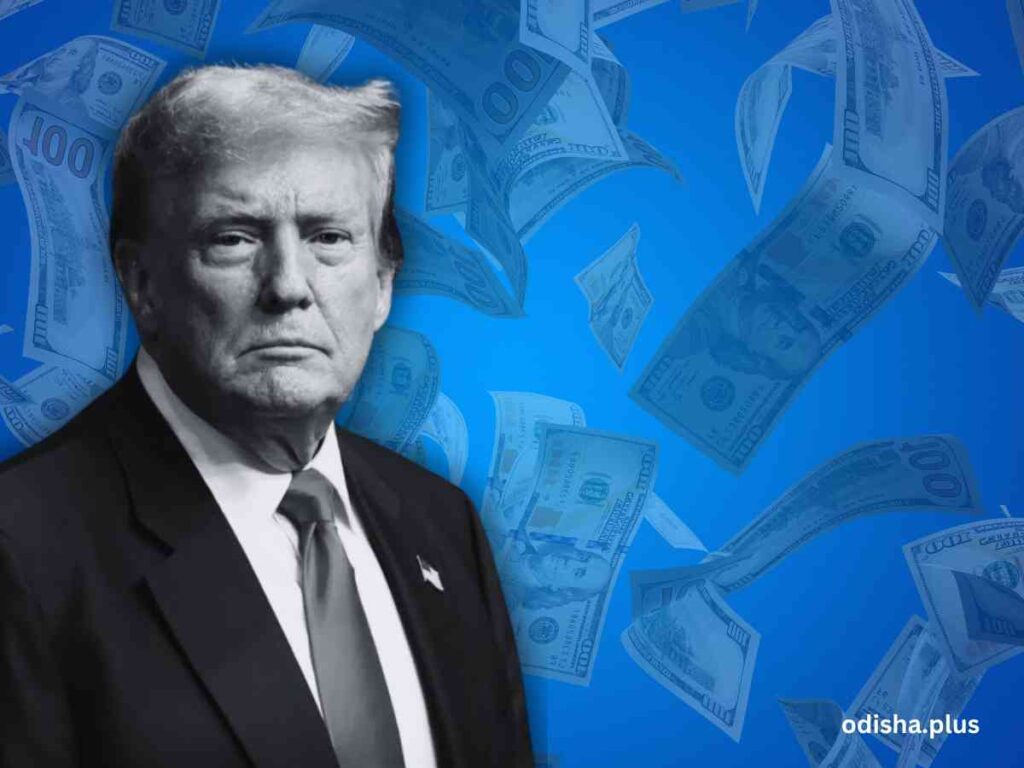President Trump’s ‘Make America Great Again’ strategy involves tariffs and tax cuts, which critics say could boost inflation and costs
Suresh Chandra Sarangi

At a time when the whole world is beset with different types of problems, both local and international, two wars have had devastating effects on the international economy, and the climate crisis stares at humanity and has already taken a toll. Trump’s difficult economics has triggered debates all round the world. Inspired by the idea of MAGA, Make America Great Again, Trump is determined to impose tariffs on other countries’ exports and ensure tax cuts at home front. Critics say that it may boost inflation, and increase the costs.
At a global level, his tariffs may disrupt global trade, with protectionism taking an ugly turn, throwing a huge blow to the globalization process. China has reverted by saying that it would also impose reciprocal tariffs on American exports. Trump might be going ahead with his pool promises, Trump’s new tariff proposal on imports at 10 to 20% and a maximum of 60% has opened the Pandora’s box and it seems that a trade war is in the offing. The Mexican prime Minister even has gone a step ahead in saying to boycott America to teach Trump a lesson.
Tax Cut
The US may use tariffs to reduce its imports from other countries and fulfill the shortfall by producing the same goods and services in the US. The overall demand in US society always remains Northbound, and if the demand is not reduced, the Trumpian theory of tariffs may cause a shortage of goods and services and consequently inflation in the US. Moreover, to make MAGA a successful campaign, savings have to improve as it would enable investment.
Again cutting taxes will leave more money in people’s hands and with fewer goods, after imposition of Tariff may cause inflation. Whether Trump’s intended purpose will be achieved or not shall be a matter of pondering in the coming days, it remains a fact that this would be a turbulent period in the American economy, with the cropping up of numerous domestic challenges. It would be better to understand the implications of a tariff hike for both the US and the world and therefore, let us peel those hidden economics in the Trumpian proposal in its more elementary form.
The decoding of reciprocal tariffs means that Trump would levy as much tariff inclusive of government subsidies, incentives like PLI incentives in India, and other benefits accruing to the exporters in other countries and the same amount would also be built Into the American tariff structure. Tariffs have been a key policy objective of the recent administration. One of the reasons for increasing tariffs with major trading partners has been the increasing trade deficit that the US has been experiencing over the years, which is growing with galloping speed. The trade deficit has grown to 1 trillion dollars.
Trump wants to increase the trade revenue by which he wants to reduce corporate taxes and other taxes and compensate the same by revenue collected in terms of import duty. Secondly, once there is a high tariff on foreign goods and services, the prices of those goods and services cannot be competitive, for which, they will not be sold and the American entrepreneurs shall then jump in to revive production. This appears to be an indirect stimulus for increasing domestic production. For some of the countries like Mexico and Canada, it is meant to reduce illegal migration.
First, in sectoral tariff, he increased the tariff on steel and aluminum. Then reciprocal tariff from country to country. Recently the increased sectoral tariff on automobiles, pharmaceuticals, and semiconductors. The list goes on with levying tariffs on different products.
India’s Position
As far as India is concerned, India is ranking 10 and has a trade surplus of 45 billion dollars with that of America. The highest surplus is of China with a thumping 245 billion dollars surplus. Other countries that run a surplus with the US are Mexico and Vietnam, after China. India is a major trading partner. So when reciprocal tariffs come, India may face a trade deficit instead of a trade surplus. The other implication is that India needs to explore the areas where exports to the US can be improved.
So, the reciprocal tariff would be a fall in our current account balance and its consequent effect on India’s balance of payments. Pharmaceutical exports are high and Indian exports to the US are ⅓ rd of total goods exports. An increase by way of reciprocal tariffs would lead the cost escalation in the US. But as it would be cost prohibitive then demand for Indian goods would reduce affecting our current account balance. Pharmaceuticals, electronics goods, and apparel of Indian export would get a shocking reversal and shall be impacted hugely, leading to a big disturbance in India’s balance of payment. Our export of steel and aluminium also will be sufferer.
US accounts for 11% of India’s exports which may get severely distorted after Trump’s reciprocal tariffs. The most important fact is Taiwan is a major center for the production of chips and semiconductors, which poses a threat to China’s production. The US never wants China to invade Taiwan and simultaneously, does not want China to lead in the semiconductor sector for which it recently proclaimed a higher tariff on semiconductors. This is like killing two birds with one stone, one geopolitical leadership, another regulating China’s growth in the semiconductor arena.
India’s aluminium sector would be affected. India can overcome this new development by focusing on services exports, which the US may not mind. Our services export has now surpassed our trade export in absolute value. Therefore, India needs to focus on the areas where there is scope for growing Indian exports to the US.
Implications on the US economy have been staggering as it is expected from the arrangement/ imposition of reciprocal tariff, and inflation has inched up. An estimate says that an increase of tariffs on China, Mexico, and Canada may impact US inflation by 0.6%, for which the Federal Reserve may not reduce the policy rate going ahead. Consumer price inflation will grow. The cost of borrowing for US producers may grow. This will lead to tight monetary policy and the emerging economy who are dependent on US exports would suffer. The dollar may be rising.
De-dollarisation Fear
Trump was very much disturbed over the rise of BRICS in the International horizon. As Trump smelt that BRICS’s attempt at de-dollarisation is an attack on the American dollar, Trump angrily reiterated that any attempt to find a BRICS currency and those who would be responsible for the birth of that alternate currency against the US dollar would be imposed 60% tariff, thereby his attempt at breaking the realignment is crucial for the safety of American dollar as the International Reserve currency.
Finally, a reciprocal tariff would be an equivalent of incentives, and subsidies a country is providing which will be built into the American tariff structure debt cost would be more also. Once this reciprocal tariff is imposed, American job data which has remained rosier all through and has not been so good as per the current statistics, may affect the policy initiative. Critics believe that this type of tariff would ultimately affect American business and destabilize global trade relationships. It becomes obvious that this may result in a full-blown trade war with that of China.
Some political critics even say that Trump’s reciprocal tariff connected with tax cuts is a strategy to help the rich in the USA. The geopolitical storm over the tariff will be a protracted battle and nobody knows who will gain or lose, till the dust settles. For India calculated risk be taken and a strategic focus on item-wise export to the US may leverage Indian export for a rebound.
(The writer is a former General Manager of Bank of India and currently a visiting professor at KIIT School of Management. Views expressed are personal.)


























